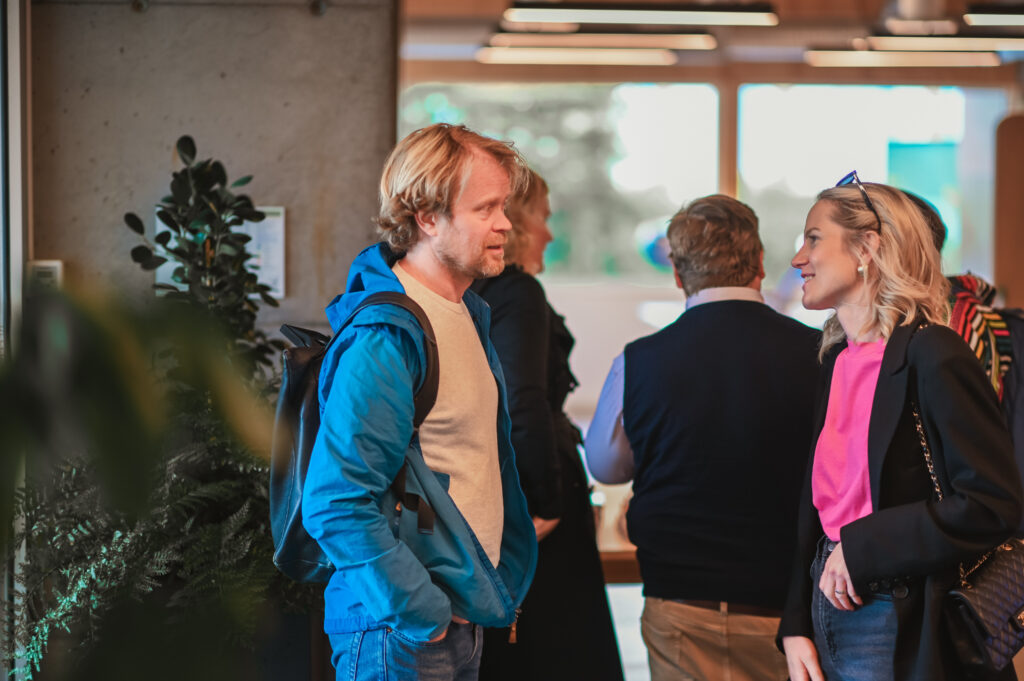What does it take to build smart and sustainable cities in the Nordic region? That is the central question explored in the newly published book The Nordic Smart Sustainable City, edited by Barbara Maria Sageidet, Daniela Müller Eie, and Kristiane Lindland. Launched in June 2025, the book offers fresh insight into how Nordic cities are combining innovation, digitalisation, and sustainability in response to complex urban challenges.
We are proud to share that two contributors to the book have strong ties to the Stavanger Region European Office: Helga Aunemo, former advisor at the office, and Helene Eiliott, current European advisor, are among the co-authors.
A useful book for anyone who cares about the future of cities
According to Aunemo, the book is not just for experts or urban planners:
“It’s a great mix of research and personal experiences from smart city work in the Stavanger region, with strong transferability in a Nordic context. Whether you’re working with urban development or just living in a city and curious about what’s happening around you, this book can be relevant,” she says.
“It addresses topics that directly affect residents — like street art, air quality, and cycling.”
Helene Eiliott agrees and highlights the importance of the book’s broad scope:
“It’s an exciting read for anyone interested in social development, whether on a conceptual or practical level. The book covers a wide range of themes, offering a critical perspective on the development of smart cities. It’s an important contribution to the ongoing conversation about what kind of future we want to work toward.”
Theory meets practice — and lessons worth sharing
The book is divided into two main sections — concept and practice — something both contributors believe increases its relevance and usability.
“It can be a helpful tool for practitioners as well as researchers,” Eiliott explains. “Whether you’re designing policy or working on a specific project, learning from past experience is a great starting point.”
Aunemo also points out that the book offers concrete recommendations based on real-world lessons:
“It’s relevant for anyone working in public services or urban development — whether you’re in the planning stage or implementing new measures. I hope the lessons from Stavanger can benefit others, both in the Nordics and across Europe.”
Why the Nordic approach?
When asked what distinguishes Nordic approaches to smart and sustainable cities, both Aunemo and Eiliott point to values and social structures.
“I think Nordic cities have traditionally focused on sustainability and public health,” says Aunemo. “You see this in citizen-oriented solutions like accessible green areas, safe playgrounds, inclusive design, benches and informal meeting places. These are closely linked to our thinking about public space — and perhaps even to concepts like the ‘allemannsrett’ (freedom to roam). These topics will remain highly relevant in Europe, and Nordic partners can bring both know-how and concrete examples to the table in European cooperation and take an active role in shaping new policies in these areas.”
Eiliott emphasizes how deeply rooted social conditions shape the Nordic response to international agendas:
“Our democratic stability, high levels of trust, and strong economies influence how we interpret and respond to global challenges. Maybe the focus on smart and sustainable cities has also helped break down silos and encouraged new types of cross-sectoral collaboration. Hopefully, it’s led to more flexibility and readiness for change.”
The power of cooperation
A central message in the chapter — and in the work done in Stavanger — is the importance of international collaboration.
“Cooperation and knowledge exchange allow cities to learn from others who may have faced similar challenges,” says Aunemo. “You gain access to new testbeds, data, and even funding — which is often needed in urban development but can be hard to find in tight municipal budgets. Most importantly, you build networks and alliances that can support you long after a project ends.
Eiliott also agrees on topic of knowledge sharing. “I believe in both sharing and learning,” she adds. “Dialogue ensures that what we do remains relevant and improves over time.”

Congratulations to Helga and Helene on this publication! It’s inspiring to see knowledge and experiences from our region being shared in an international academic context — and contributing to the ongoing work of building inclusive, resilient cities across Europe.